No Products in the Cart
Dog Osteoarthritis Management: How To Help Your Dog With Exercise, Diet, And Treatments
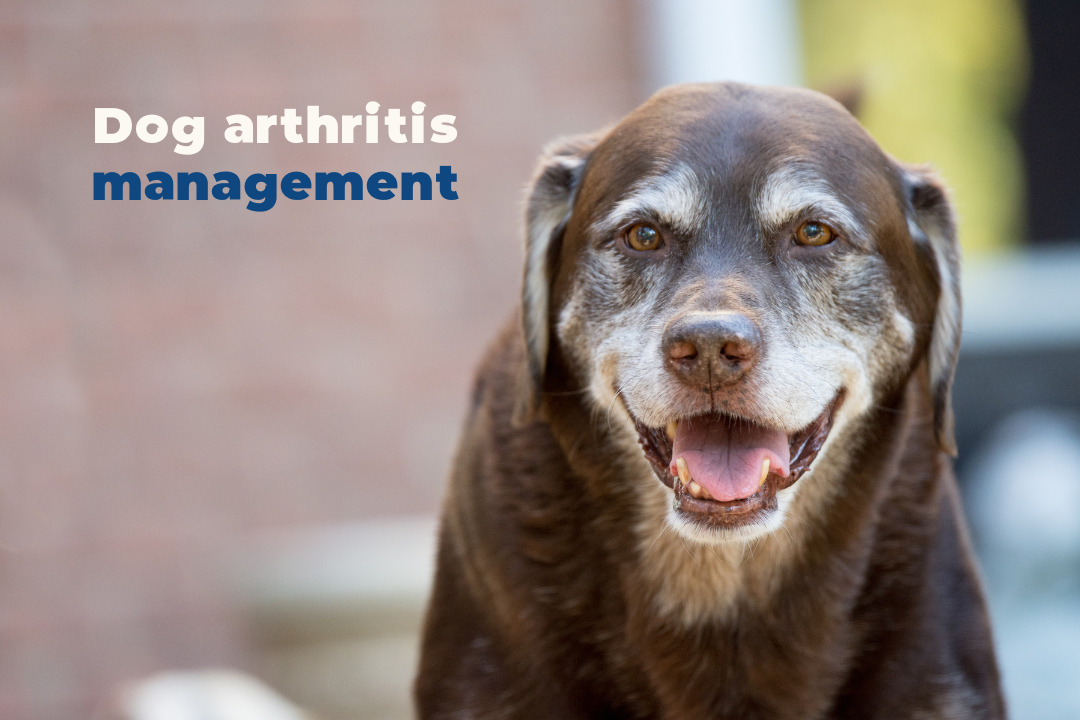
Hi Jope's squad!
Dog osteoarthritis is a complicated and painful condition. Luckily, it can be managed with the right exercises, diet, and treatments. In this article, we explain to our Jope Squad how you can help your dog live a good life with osteoarthritis. A good prognosis is possible with love and regular care.
Osteoarthritis (OA) also affects humans. So, if you live with or know someone who has OA, you already know how painful this condition can be. Dog osteoarthritis is, like human OA, a severe disability. That’s why pet parents need to learn about this debilitating affliction. Together, we’ll find out how to make your dog comfortable, minimizing their pain and discomfort from osteoarthritis.
Key facts about dog osteoarthritis management:
- Osteoarthritis (OA) is a chronic joint disorder caused by abnormal wear and tear of the cartilage.
- Cartilage changes in the joint leads to changes across the entire joint.
- Supplements can help limit OA symptoms, disease progression, and pain.
- Dog osteoarthritis stems from multiple causes. These causes can be structural or mechanical.
- An osteoarthritis diagnosis is complicated. Often, it involves a physical examination by your veterinarian, as well as many tests.
- Dog osteoarthritis treatment include many different treatment options and techniques. A complete treatment plan is called a multimodal treatment.
What is dog osteoarthritis?
You might wonder why we’ve dedicated such a long article to the topic of dog osteoarthritis. But the numbers speak for themselves! Indeed, more than 20% of dogs in the United States have OA. And among large-breed dogs, this condition can affect 45% of the population. That’s nearly one out of every two large-breed dogs.
So, let’s start with some basic osteoarthritis facts. This information can help you understand what to expect from your dog’s treatment. Then, we’ll guide you on a deep dive into osteoarthritis management for dogs.
First, note that OA is a chronic condition. It causes ongoing pain in the joints due to unusual wear and tear. This damage starts in the cartilage.
Normal dog joints versus joints with osteoarthritis symptoms
Second, dog osteoarthritis symptoms can be extensive. But the condition starts in a small structure that’s key to the whole body: the joints.
Healthy dogs’ normal joint structure includes a joint capsule, ligaments, cartilage, and synovial fluid. The joint is surrounded by tendons and muscles, which protect the joint and keep it stable.
As we’ve noted, the cartilage is really where osteoarthritis problems begin. We all know the word cartilage, but do you know what cartilage is on a structural level? Cartilage is a complex material. In adult dogs, cartilage is 70% water and a matrix of glycosaminoglycans and type II-collagen. Because of its high water content, cartilage is translucent, and it doesn’t appear in x-rays. Also, cartilage is elastic, and it absorbs shocks.
Meanwhile, the joint capsule surrounds all the moving parts of your dog’s joints. This capsule is filled with synovial fluid, which lubricates the joint to prevent friction. Because the cartilage has no direct blood supply, the synovial fluid also provides nutrients to the cartilage. These nutrients include glucose, oxygen, and amino acids. The joint’s movement and the pressure it experiences affect the volume of the synovial fluid. And, these fluctuations allow exchange of nutrients between the cartilage and synovial fluid to occur.
 Diagram 1: Osteoarthritic dog joint and normal dog joint comparison
Diagram 1: Osteoarthritic dog joint and normal dog joint comparison
What causes osteoarthritis in dogs?
When you think of dog osteoarthritis, your mind will probably picture older dogs. However, osteoarthritis can affect all dogs—even young puppies. Dogs’ age, size, excess weight, breed, and medical history are all factors affecting joint pain.
As we’ve seen already, OA is a very complicated disease, and it can take many forms. Sometimes, dog osteoarthritis can occur without any underlying factors. Some veterinarians might refer to these cases as primary osteoarthritis.
This type of OA results from the natural aging of a dog’s cartilage. Just like us humans, the older an animal gets, the more their cartilage deteriorates. And this damage usually affects several joints at the same time.
Other times, your vet might refer to secondary osteoarthritis. Secondary OA occurs with joint malformations, such as elbow or hip dysplasia, patella (knee-cap) dislocation, or osteochondrosis.
It can even occur after trauma, such as a fracture or rupture of the cruciate ligament. (In the latter case, however, treatment can slow the progression of osteoarthritis through cruciate ligament surgery). Secondary OA degrades the cartilage much more quickly than usual. Additionally, it’s often a localized problem, affecting only certain joints.
Large dogs, like great danes, and medium-sized dogs are particularly prone to secondary osteoarthritis. But this painful disease can also affect small dogs. (For example, patella dislocation is very common among Yorkies, Malteses, ect. )
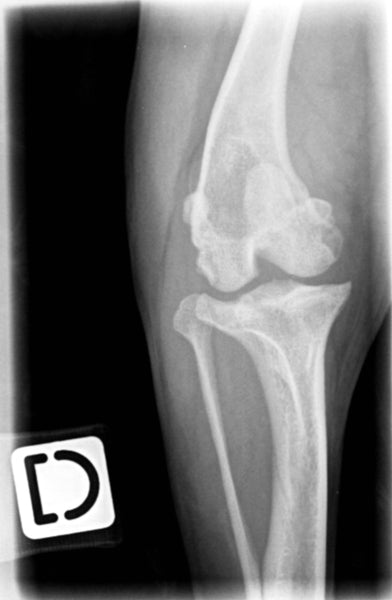
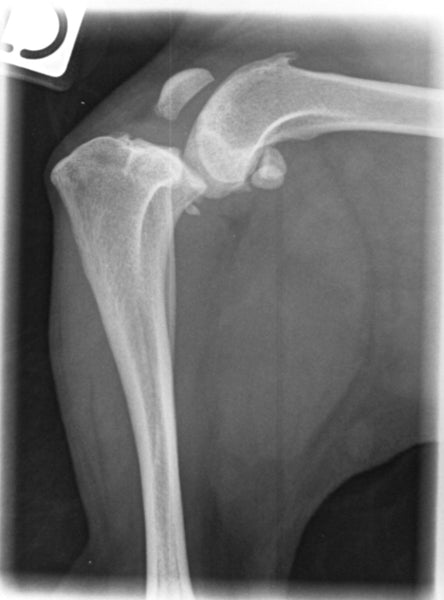
What are the signs of osteoarthritis in dogs?
Dog osteoarthritis symptoms can appear at any age. And you’ll usually notice more and more signs as your dog gets older.
The first sign of OA is reduced joint mobility. That’s when your dog’s range of motion decreases. This change is due to inflammation in the joint, which thickens the joint capsule. In turn, this thickening restricts your dog’s movements and causes pain in the joint. As a result, your dog won’t want to move the joint as much. Then, as the disease gets worse, you might even hear creaking (or rubbing) sounds when your dog bends or extends their paw.
The more cartilage wears away, the more the arthritic joint degrades. If you don’t act early, the cartilage damage can even expose the bones in joints with osteoarthritis. In turn, when these joints move, dogs can feel extreme pain.
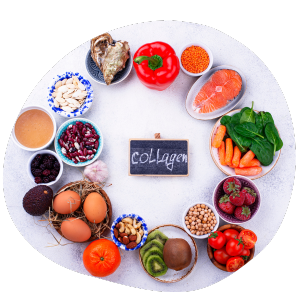

A Vet Expert's 5 Reasons to Use Collagen for Dog Joint Health
Collagen is a protein that plays a vital role in the health of our body's connective tissues, including joint cartilage. I will discuss the safety and benefits of collagen for dogs, the different forms it can come in, and my recommendation regarding the best collagen supplement for dog joints.
Learn MoreSo, to reduce this pain, their bodies compensate by building up bone-like material at the tips of their bones. This material reduces bone-on-bone contact. Basically, dogs’ bodies make up for cartilage damage by creating a substitute that restricts their mobility and bone contact, thus reducing their osteoarthritis pain.
But the consequence of this natural protection from their pain is joint modification. And these changes will modify your dog’s muscles as they adapt to take off pressure from the affected area. Then, the same thing happens to the other joints that can overcompensate as your dog adapts, changing how they carry their weight.
Also, osteoarthritis pain can sometimes spread to your dog’s muscles. When that happens, pain management becomes more difficult. Proactive monitoring for the signs of OA, along with early management, can help delay or prevent these negative outcomes. Daily functional products that are natural and scientifically proven to work are a great idea. They can improve your dog’s hip and joint health at any age.
How to recognize dog osteoarthritis symptoms?
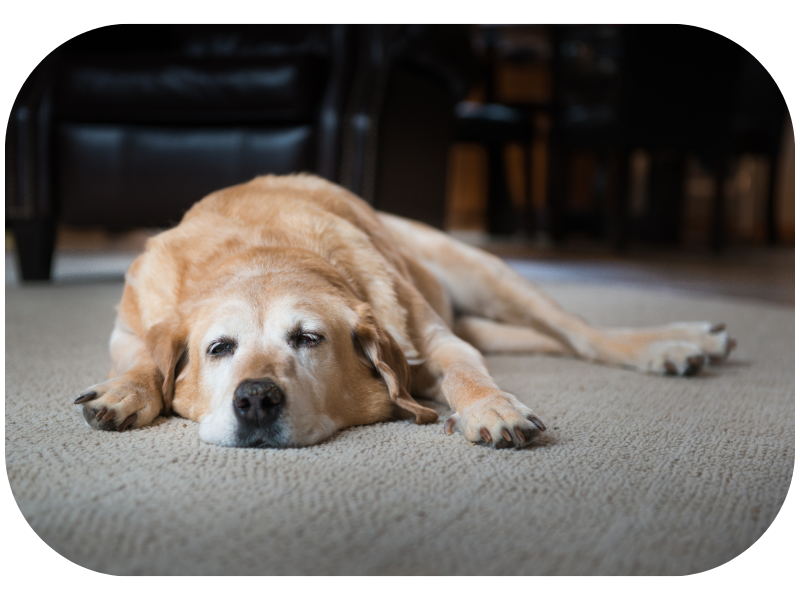
No surprises here! Osteoarthritis symptoms can vary a lot from dog to dog. But one common feature, regardless of the origin, is that pain causes the signs of OA. So, the signs you might notice in your dog’s behavior are really pain symptoms. This pain can be acute—coming on suddenly and intensely. Alternatively, this pain can be chronic, possibly less obvious, and worsen over time.
In some cases, x-rays of dogs with osteoarthritis can reveal damage in the elbow or hip without any other signs. This finding is more common among younger dogs. Some dogs with osteoarthritis even live for many years without any signs of pain or discomfort. Then, when OA signs start showing up, they can be very mild. They can even go unnoticed to the untrained eye.
So, it’s important to keep an eye out for possible dog osteoarthritis symptoms. You should look out for:
- Lameness.
- Stiffness.
- Decreased activity and desire to play.
- Sudden aggression when touched.
- Licking and chewing the joints.
- Lower energy.
- Less of an appetite.
- Unusual anxiety.
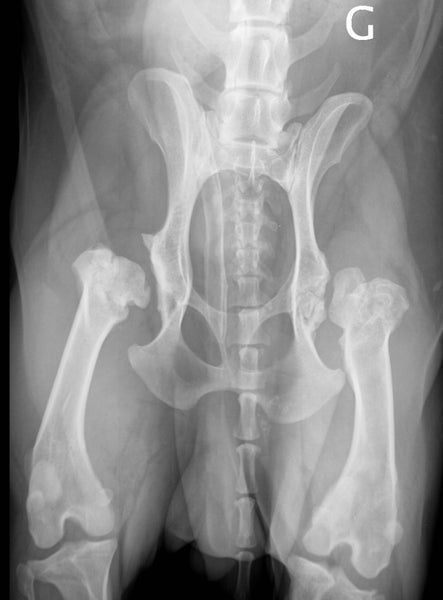
Picture 3 - An x-ray showing an adult dog's hips totally malformed by osteoarthritis. Note the mushroom-like appearance of these joints. (Toulouse Veterinary School)
Focus on symptoms of lameness and stiffness
The two main signs you need to remember that could suggest OA in your dog are lameness and stiffness (at varying levels). Lameness and stiffness are most noticeable after a dog has rested. So, you should look at how your dog walks in the morning. That’s because after the muscles have warmed up, they tend to hide the signs of lameness and stiffness. On the other hand, intense activity will make lameness worse as pain levels increase.
In order to minimize your dog’s pain, we recommend always adapting your activity levels to their overall capacity. The right activities for dogs with osteoarthritis vary a lot. They depend on your dog’s age, as well as the disease’s overall evolution. We share some tips and examples below.
Note that swimming is always a good idea.
Another key factor in choosing the right exercise for your dog is the season. Warm, dry summer days decrease pain. Meanwhile, rainy, cold winter days make arthritis pain worse.
Unsurprisingly, when your dog is feeling pain because of osteoarthritis, they’ll avoid specific movements. For example, they might struggle with:
- Getting up by themselves.
- Jumping up on the couch or into the car.
- Using stairs.
- Hunting or running.
How to help your dog manage osteoarthritis pain?
If you notice any reluctance with these activities, you should never push your dog. And you should always help them, supporting them through these processes. If your dog seems to have ongoing difficulty with everyday activities, you should always contact your vet. Together, you and your vet can decide on the best treatment to help relieve your dog’s arthritis pain.
“Your dog isn’t just getting old. They might be suffering from osteoarthritis pain. The pain and other symptoms of OA reduce dogs’ mobility, rather than their age.”
In the early stages of dog osteoarthritis, you’ll probably notice limping that comes and goes. Over time, the symptoms will become more constant. Sadly, that’s because pain can settle in and become chronic.
In the later stages of OA, unfortunately, your dog’s pain will become more noticeable. They might also struggle with simple daily movements, such as changing positions. You might even find them favoring one side over another, becoming restless or unable to find a comfortable position. They might have sleepless nights and growl or vocalize when they’re in pain.
Looking for more ways to help your dog with their OA pain? Check out our tips below.
When should you see a vet if you think your dog has osteoarthritis?
If you suspect OA in your dog for any reason, you should schedule an appointment with your vet. Because the signs and symptoms of osteoarthritis are so broad, it’s hard to know specifically when you should suspect OA over any other problem.
But, as we mentioned, lameness and stiffness are the two main signs of dog osteoarthritis. So, we recommend looking out for them in particular. If your dog’s lameness and stiffness don’t improve after 5 days of rest, it’s time to make a vet appointment.


Best Collagen for Dogs - Vet's Expert Advice
Collagen, a rising star in pet wellness, offers diverse forms designed for specific benefits. When it comes to boosting your dog's joint health, find out which collagen solution is the right fit for them...
Learn More
How is dog osteoarthritis diagnosed?
Diagnosing dog osteoarthritis can be tricky. That’s because the clinical signs are diverse. Plus, this disease affects dogs of all ages and genders equally. OA can also stem from many different afflictions—such as hip and elbow dysplasia, osteochondrosis, trauma (for examples a Salter-Harris Type II fracture - Picture 4 (a) & (b)), and luxating patella (See Pictures 1 & 2).
Generally, vets suspect OA based on pet owners’ history and the signs you’ve noticed. They’ll also consider how long these symptoms have lasted.
A careful clinical exam will assess how your dog walks and moves. Your vet will also check all joints by palpation and mobilization (movements). Then, your dog’s medical team will establish a preliminary diagnosis—or a likely diagnosis. To confirm, they’ll often use x-rays ( See Picture 5). This imaging shows changes in and around the joints that are classic osteoarthritis signs. Your vet might also work with an imaging specialist to confirm their OA diagnosis if the clinical signs are subtle.
During the exam, your vet might look for another dog osteoarthritis symptom: sore and tense muscles. Indeed as we saw earlier, when OA affects a dog’s joints, it often causes muscle pain. This pain shows with increased muscle tension, which makes the muscles very hard when you touch them. And this pain can involve a muscle or group of muscles. They may be tight or sore because your dog is trying to relieve their joint pain by shifting how they carry their weight. If osteoarthritis affects your dog’s hindquarters, they’ll often have tight, sore back muscles. That tension is due to uneven weight distribution.
Vets know from experience that OA affects some joints in particular. These joints include the elbows, hips, knees, toes, and tarsals. Generally, though, dog osteoarthritis doesn’t affect the shoulders or ankles.
After diagnosis, medical treatment is the next step. OA treatments include pain medication and dietary supplements, physical activity, and a proper diet. Together, these approaches help achieve the best prognosis for your dog.


Medical treatment for dog osteoarthritis
Using NSAIDs to control OA pain
At the top of this article, we explained that inflammation drives the vicious circle of OA. So, an important part of treating dog osteoarthritis is reducing inflammation. And you should keep in mind that OA isn’t curable. However, you shouldn’t lose hope because the right functional products, exercises, medication, and treatment can reduce the symptoms and improve your dog’s quality of life.
Some dogs do well without anti-inflammatory (NSAID) or pain medication. But sometimes, NSAIDs are necessary to manage osteoarthritis pain and inflammation. Also, some dietary supplements—such as Omega 3 and UC-II—are scientifically proven to reduce pain and inflammation.
If NSAIDs are necessary to improve your dog’s quality of life, your vet will likely recommend NSAID courses of two weeks or more. They’ll include regular controls to check your dog’s renal and gastric health.
These check-ups are important. Just like for us, NSAIDs can cause side effects for your dog’s stomach, kidneys, and liver. So, if your dog starts vomiting or has diarrhea while taking NSAIDs, call your vet right away. Together, you can discuss the best treatment plan to help your dog.

Monoclonal antibodies: a medical innovation
Monoclonal antibodies are another treatment for dog osteoarthritis. These proteins are made in a lab. They mimic the immune system’s ability to fight off harmful cells, molecules, or pathogens. By binding to their specific target, they limit its actions.
Note that in February 2021, the FDA approved the use of monoclonal antibodies to treat COVID-19. So, as you can see, monoclonal antibodies have multiple medical uses.
For OA treatment, monoclonal antibody therapy is a monthly injection that targets nerve growth factor (NGF). NGF is a key player in osteoarthritis pain. By binding to NFG, monoclonal antibodies also inhibit its action.
This therapy is not yet available in the United States. But Zoetis launched the first monoclonal antibody treatments in Europe in mid-2021. The initial feedback on this treatment is quite promising. So far, reports have noted minimal side effects.
Platelet-rich plasma (PRP): a natural cell therapy to help with OA pain
If your dog has osteoarthritis, your vet might also recommend a platelet-rich plasma (PRP) injection directly into the joint to help the affected joints. Vets obtain PRP from running a little of your dog’s blood in a centrifuge. This process concentrates the platelets, separating them from the white and red blood cells. Next, your veterinary surgeon will inject this PRP into your dog’s affected joint. This process takes a few minutes, and it requires anesthesia.
The PRP from your dog’s blood also contains some growth factors that could help reduce joint inflammation. Platelets might work with these growth factors to help naturally heal osteoarthritis damage, improving lameness and stiffness for dogs with AO.
Only a few studies have examined PRP so far. But in practice, this treatment has shown good results for dogs with osteoarthritis. For some dogs, one injection is enough to relieve their discomfort. Meanwhile, other dogs might need more than one injection.
Drugs play an important role in treating dog osteoarthritis. But they also have secondary effects. Fortunately, supplements offer a solution without secondary effects or complications.
The best supplement to help your dog manage osteoarthritis
Do chondroitin and glucosamine really help with dogs osteoarthritis?
If your dog has OA—or if you’re simply proactive about their joint health—you’ve probably done a lot of research.
You might have noticed that most nutritional supplements on the market contain both glucosamine and chondroitin sulfate. Together, they’re believed to help pets because they’re part of the matrix that builds new cartilage (glycosaminoglycans).
Plus, they occur naturally in the body. But you might not know that most studies have shown the use of glucosamine and chondroitin to reduce osteoarthritis symptoms for either dogs or humans had mitigated results.
A 2017 review of 18 publications highlighted that no objective studies (using plate forces) have revealed any benefits to date. So, more studies are needed to properly assess glucosamine and chondroitin supplements for dogs.
Omega 3 supplements offer proven benefits
An older systematic review in 2012 stated that chondroitin and glucosamine offered no objectively proven benefits. The authors explained, “According to our criteria in this review, the global strength of evidence of efficacy was low for Glucosamine and Chondroitin sulfate. In addition, results were contradictory in the 2 studies conducted in dogs.”
On the other hand, this review emphasized, “The highest global strength of evidence of efficacy was demonstrated by Omega 3 supplemented diet.”
Additionally, an objective study in 2010 using plate forces showed a significant improvement in 82% of dogs whose diets included 3.5% fish oil Omega 3s. The control group received no Omega 3 supplements. Interestingly, the dogs without Omega 3 supplements didn’t improve. (They achieved just a 0.4% average change.)
Finally, veterinary specialists generally agree that including Omega 3s in your pet’s diet helps relieve OA pain due to inflammation.
UC-II®: An innovative molecule with proven benefits for dog arthritis
In 2020, researchers reviewed 18 studies about UC-II®.
They then stated that UC-II® is objectively proven to more effectively improve joint health and mobility than the combination of chondroitin and glucosamine.
Plus, this review included a 2012 objective study that found a significant improvement in dogs using undenatured type-II collagen (UC-II ®) compared to other molecules.
Want to learn more about UC-II supplements for your dog? Check out our full article on this innovative molecule.
How to manage my dog's arthritis?
We mentioned earlier that if your pet has OA, their treatment must be multimodal. Also, we briefly addressed the medical part of this multi-part treatment. Now, let’s see what other components can help improve osteoarthritic dogs’ quality of life. From physical exercise to the right diet to reduce your dog’s symptoms, these habits can make a big difference.

Exercises you can do at home to manage your dog’s OA
One of the best ways to help your dog with their osteoarthritis is to control their weight! You should make them get regular activity that suits their physical abilities. Daily exercise will help reduce the pain of osteoarthritis, delaying the disease’s progress.
First, keep in mind that your arthritic dog will feel better with several short walks, rather than one long one. Also, do your best to keep up a steady routine that you can repeat every day of the week. Consistency is key here.
Also, we recommend paying attention to the surfaces you walk your dog on. Choose soft surfaces whenever you can.
As everyone knows, before exercise or strenuous activity, warming up is important. Warmups reduce the risk of injury, and this is also true for your dog. You can massage their muscles before going on a walk, and you can also start at a slower pace for the first five to 10 minutes. Also, consider “cooling down” with a slower walk after an exercise session. Cooldowns help your dog’s muscles eliminate waste efficiently.
If your dog has OA, don’t assume they shouldn’t stay active! On the contrary, dogs with osteoarthritis can and should move a lot.
However, their movement must be gradual and controlled. Start with short walks multiple times a day. Then, gradually increase your walks’ length and even intensity. (Only increase the intensity if your pup can handle it.)
Again, a proper warmup and cooldown session can make all the difference for your dog. With careful, steady exercise, you’ll see a positive impact on your dog’s OA symptoms. Joint mobility can improve while your dog’s overall lameness reduces.
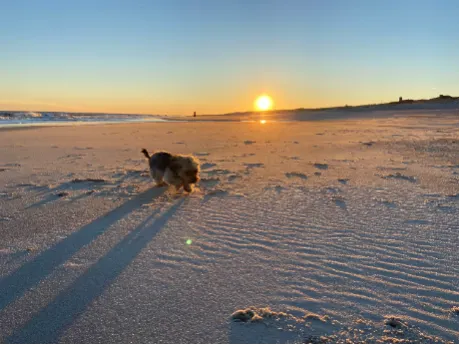
Exercises you should avoid
Dogs with osteoarthritis should avoid some exercises. Rough play with other dogs isn’t a good idea, and neither is exercising on hard surfaces. You should also avoid long runs and other strenuous activities, like fetching a ball.
Additionally, avoid making your dog accelerate quickly. For example, fetching a ball, stick, or frisbee isn’t an appropriate game for pets with OA. That’s because start-and-go games seriously stress your dog’s joints, which can lead to micro-traumas.
Next, carefully observe your arthritic dog when they’re walking on a slippery surface. You’ll notice that they’re cautious with their steps. That’s because they’re afraid to slip, and rightly so! A slip or fall could really worsen their symptoms. So, avoiding situations where your dog might slip is the best approach. For example, don’t let your dog walk on icy sidewalks in the winter.
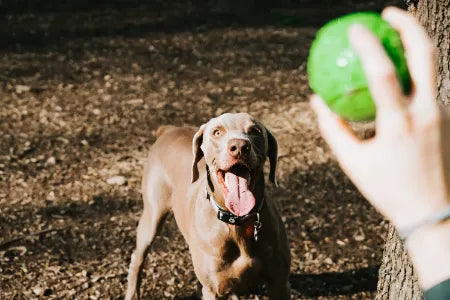
Other exercises for dogs with osteoarthritis
Other exercises can help strengthen your dog’s muscles, helping relieve their osteoarthritis symptoms. These options include:
- Shaking paws if your dog has OA in their front legs.
- Sitting and standing exercises if they have OA in their hindquarters (remember to choose a non-slip surface).
- Walking a gentle obstacle course.
Gentle obstacle courses at walking speed can help your dog lift their legs more precisely. Your dog should go over any obstacles slowly, without jumping. Plus, you can raise the obstacles gradually as your dog gets used to lifting their legs higher.
How to help your dog lose weight
As you might expect, extra pressure on dogs’ joints due to excess weight can worsen joint damage. One study found that weight loss for dogs with osteoarthritis reduces their pain and need for medications. Noticeable improvements can occur as soon as a dog loses 6–10% of their dog’s weight, the authors concluded.
“These results confirm that weight loss should be presented as an important treatment modality to owners of obese dogs with OA and that noticeable improvement may be seen after modest weight loss in the region of 6.10–8.85% body weight.”
Even for dogs, losing weight isn’t easy. It requires a lot of willpower. Plus, dogs come up with all kinds of tricks to get you to feed them when they’re on a diet.
One of Christine’s dogs, Faune, had a very clever routine to get us to feed him. First, he started with a stare and a head-push to let us know he was hungry. Then, he would start barking while continuing to stare. And if that wasn’t enough to make us crack, he’d go to the garden and gather some dirt in his mouth to throw on our carpet. These antics clearly signaled, “Look! You’re not feeding me enough. I have to eat dirt.” We love him, but this black Lab is an adorable, clever little devil!
How much should you feed dogs on a diet?
Despite dogs’ clever tricks, sticking to a strict feeding schedule and the right amounts is very important. If you give your dog treats, you also need to decrease their food at mealtime. Just like with us humans, total calorie intake is what matters when trying to lose weight.
Worried you’re not giving your dog enough food when they’re on a diet? Try adding water to their current dry food.
You can also add string beans or pumpkin puree for added fiber. Alternatively, switch to wet food. (It has a higher water content than dry food.) And always control the amount you feed your dog.
Also, every dog food brand has a “weight management” category you can consider switching to. Some of our favorite diet dog foods are Royal Canin Satiety Support Weight Management Dry Dog Food and Hill’s weight management product. Both these dog foods are available in wet and dry formulas. Plus, they have a high fiber content, making your dog feel fuller for longer.
How can I help my dog with osteoarthritis?
Warmups and winter workouts for dogs
In general, keeping your dog’s muscles warm to avoid stiffness and lameness is the best idea. So, in winter, we recommend putting a coat on your pup. You should also use a blanket if you’re going to be outside for a while.
Also, avoid letting your dog rest directly on your kitchen tile. Instead, place a blanket where they tend to rest. The blanket will give them traction when they need to get up.
Next, if you get a lot of snow in the winter, consider walking your dog in deep snow for a few minutes. This exercise helps build muscle mass. But remember not to keep this up for long! You don’t want your dog to get cold. Make sure to keep them warm after this wintertime exercise.
Improve your dog’s well-being with cozy surroundings
Keep in mind that your dog’s surroundings can affect their well-being. Your dog should have soft surfaces to sleep on. These cozy spots will help keep them comfortable and reduce their osteoarthritis pain.
Plus, having blankets and mats where your dog likes to relax will help them get up and down easily, keeping them safe and more active overall.
Rehab and massage treatments to manage dog osteoarthritis
Another dog osteoarthritis treatment to consider is rehabilitation. It can significantly improve your dog’s physical condition and comfort. Rehab is especially effective for dogs in combination with other treatments. And you shouldn't just think of rehab as a “last-resort” option for if your dog’s overall condition decreases. Early and proactive rehab sessions can greatly improve your pet’s overall quality of life, slowing down symptoms’ development.
The goal of pet rehabilitation is to prevent worse stiffness in joints and muscles, improve joint mobility and overall quality of life. It’s especially important to improve mobility after inactive periods. With rehabilitation, you can focus on relieving muscle tension, restoring muscle mass and strength, and reducing your dog’s pain. Several techniques are available. Usually, you’ll work with a veterinary rehabilitation specialist. They’ll come up with a treatment plan customized to your dog’s needs.
Also, as we discussed above, massage can help your dog warm up before physical activities. Massages can also help relax your dog’s muscles.
They’re a gentle, relaxing treatment that usually improves blood flow to the muscles. Plus, massage relieves muscle tension and normally releases endorphins, a natural painkiller from the body. Massage also improves the elasticity of your dog’s muscles and tendons. This treatment has a relaxing effect on dogs’ nervous systems, reducing stress and anxiety.
Bonding with your dog
Once you start giving your dog massages, you’ll probably notice how much you both appreciate this time together. That’s because massage treatments can also be a bonding moment.
Just ask Christine’s dog Pepsi! Christine and her mom gave this beloved berger des Pyrénées boy with severe OA lots of massages, and all three of them cherished these moments. They could see Pepsi’s tense muscles relax. His eyes closed, and his mind found peace during his massage sessions.
These days, with their new pup Rio (nicknamed “Loopy” by Christine’ dad), massage time is when he’s resting. And that doesn't happen too often! This two-year-old berger des Pyrénées pup is full of energy. We strongly recommend trying massage on your dog early on. You’ll get hooked on this intimate moment! Here at Jope, we’re big fans of massages to help dogs with OA feel more comfortable and relaxed.
Stretches for dogs
Similar to massages, stretching can relieve muscle tension after strain by releasing muscle contractions. That’s how stretching improves mobility and reduces pain for dogs with osteoarthritis.
We strongly recommend connecting with a specialist before doing any stretching routine with your dog. That way, you can make sure you’re doing the proper stretches. You don’t want to risk hurting your dog by over-stretching!

Can hydrotherapy help treat dog osteoarthritis?
Hydrotherapy is another popular treatment that helps dogs with OA, and it’s one of the Jope team’s favorites! This treatment is great for muscles and joint mobility. That’s because it allows your dog to exercise with less body-weight pressure on their painful joints. So, this is a good treatment option for dogs with osteoarthritis.
Also, for chronic problems, hydrotherapy can help your dog regain confidence in using their damaged body parts. These dog exercises mobilize the joints without placing a heavy load on them. Hydrotherapy also increases muscle strength, and it will improve your dog’s overall physical condition.
So, where can you find hydrotherapy for your dog? If you bring your dog to a specialist in veterinary rehabilitation, they can offer hydrotherapy using an aquatic treadmill. These treadmills are underwater, and your dog can walk on them while partly submerged. These machines are very cool to see since they have adjustable water levels. That way, it can put the right weight on your dog’s joints to achieve the best results. Walking in water effectively strengthens the back muscles while stimulating a dog’s whole body.
Pools are another option for canine hydrotherapy. Rehab specialists can swim with your dog and make sure they do the right exercises for an appropriate amount of time. Swimming is also a wonderful activity for overweight dogs. It reduces the burden on the joints so that your dog will lose weight fast.
Another great perk of water activities for dogs is that they’re fun! If you watch your dog perform these activities, you’ll see that swimming and treadmills are fun for them, too.

TENS and acupuncture for dogs with osteoarthritis
Finally, some more uncommon treatment options for dogs with osteoarthritis are transcutaneous electrical nerve stimulation (TENS) and acupuncture. TENS treatment alleviates both acute and chronic pain. It can be effective when acute pain stems from the joints, bones, muscles, skin, internal organs, or nervous system.
In veterinary medicine, acupuncture is a newer treatment option that’s been gaining momentum. It can treat dogs’ muscles, joints, ligaments, and bone pain. Also, canine acupuncture has often achieved good results in combination with other medical treatments. These synergistic options include painkillers and functional support products, like advanced hip and joint supplements.
Some final notes about helping dogs with OA
Even though osteoarthritis is incurable and complex, you have many options to help your dog live a good life with OA. We hope you’ve found these osteoarthritis facts and treatment tips useful. With a little extra attention, love, and care, you can greatly improve your dog’s quality of life.
Remember: it’s important to look out for signs of stiffness and lameness. If your dog has OA, you also need to control the pain this disease causes. You can be proactive by using natural supplements for dogs that offer proven efficacy, such as Omega 3s and UC-II.
You should also work closely with your vet to monitor your pet’s progress. Ask your vet if NSAIDs, monoclonal antibodies, PRP therapy, rehabilitation, massage therapy, or acupuncture could help your dog with their osteoarthritis. Managing your dog’s weight and maintaining routine daily activities that fit their needs will help reduce the lameness, stiffness, and pain of OA.
Please feel free to email us if you have questions or comments. If your dog has osteoarthritis, you might be looking to connect with other pet parents for tips. Join our Facebook group to share stories and ideas with the Jope Squad.
FAQs
Can Arthritis be cured permanently?
No, osteoarthritis cannot be permanently cured. Osteoarthritis, also called arthritis, is a progressive and degenerative joint condition, meaning joint damage and deterioration generally worsen over time.
Veterinary treatment focuses on effectively managing symptoms, reducing discomfort, improving mobility, and slowing disease progression. Supplements with clinically studied ingredients, such as UC-II® collagen or EPA and DHA (omega-3s), can significantly help maintain joint health and comfort, but ongoing care is necessary.
How effective is glucosamine for treating osteoarthritis in dogs?
While glucosamine is a common ingredient in many joint supplements, veterinary research and clinical experience indicate very limited to no efficacy. Recent scientific studies show that advanced ingredients like UC-II® collagen provide superior joint health outcomes compared to glucosamine and chondroitin. UC-II® collagen works by regulating the immune response in joints, reducing inflammation, improving mobility, and enhancing overall joint function more effectively.
Therefore, veterinary experts increasingly prefer supplements with UC-II® collagen, over traditional glucosamine formulations.
What activities make osteoarthritis worse?
Activities that exacerbate osteoarthritis include:
- High-impact exercises such as jumping, rough play, or strenuous running.
- Excessive stair-climbing or climbing onto high surfaces when dogs are puppies. At a young age, their joints need to be treated carefully.
- Overexertion or prolonged activity, particularly without sufficient rest.
- Activities on hard or slippery surfaces, which stress or destabilize joints.
- Obesity or excess weight, placing additional pressure on joints.
Veterinarians recommend managing these activities carefully, providing controlled and gentle exercises combined with supportive joint supplements containing UC-II® collagen, omega-3s (EPA and DHA), and curcumin.
What is end stage osteoarthritis?
End-stage osteoarthritis in dogs refers to advanced deterioration of joint cartilage, leading to severe inflammation, chronic pain, and a major loss of mobility, ultimately reducing a dog’s quality of life. At this stage, the cartilage is severely worn down or completely absent, causing the bones to rub directly against each other. This bone-on-bone contact results in intense, persistent pain and irreversible joint damage.
In addition to cartilage loss, osteophytes (also known as bone spurs) often form, these are abnormal bony growths that develop around the joint edges in response to chronic inflammation and instability. They further restrict movement and contribute to joint pain.
Another key feature of end-stage osteoarthritis is the presence of cartilage debris and free-floating type II collagen fragments in the synovial fluid. These fragments result from the breakdown of cartilage and can worsen inflammation inside the joint, creating a vicious cycle of further damage.
Managing end-stage osteoarthritis typically requires intensive veterinary care, including strong pain medications, anti-inflammatories, physical therapy, and in some cases, surgical procedures to maintain comfort.
Importantly, early intervention, with veterinary-approved joint supplements, proactive weight control, and gentle, consistent exercise, can significantly slow the progression of joint degeneration and delay the onset of severe osteoarthritis.
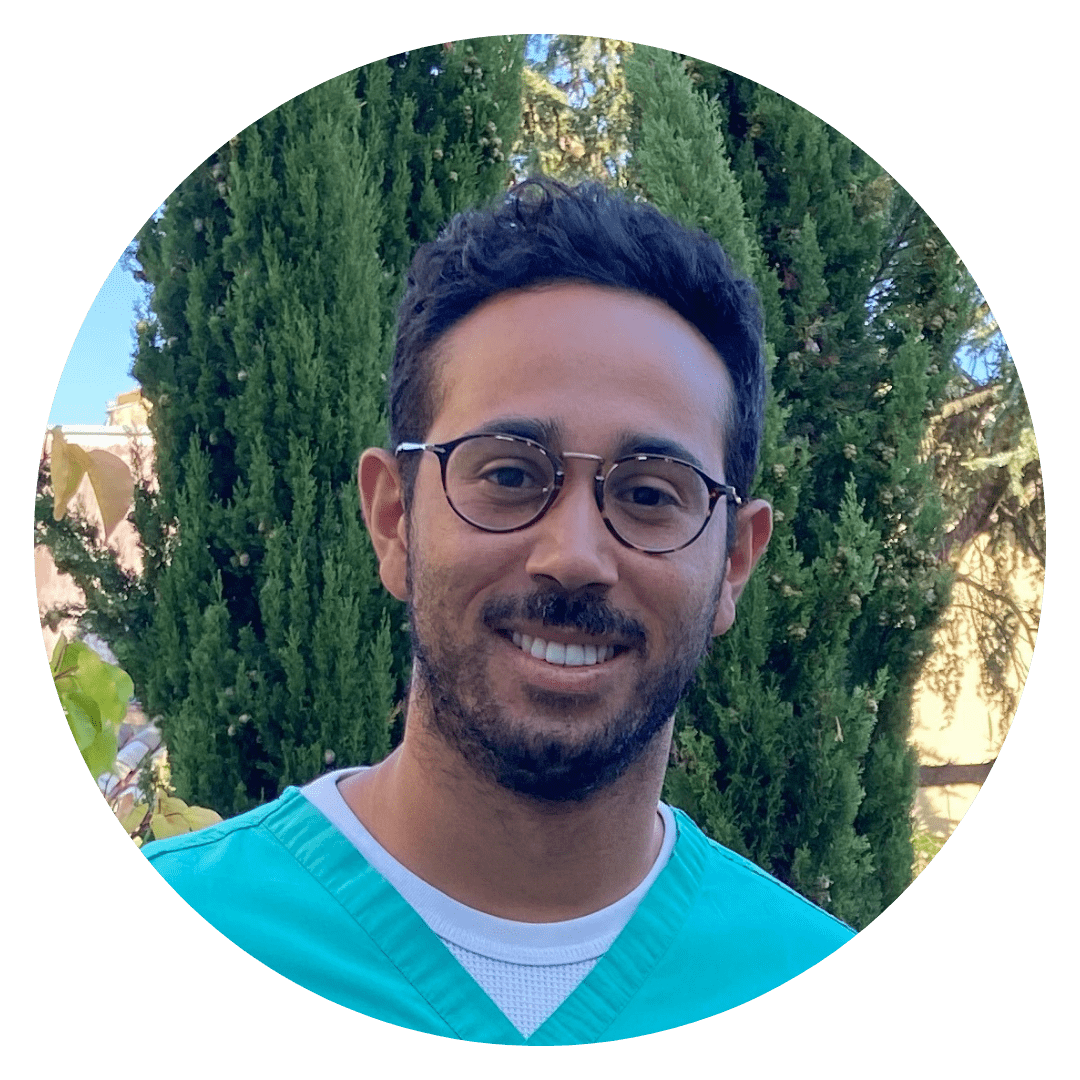





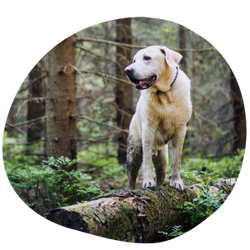
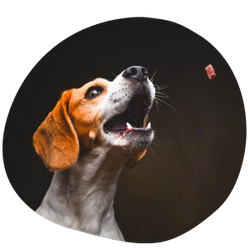
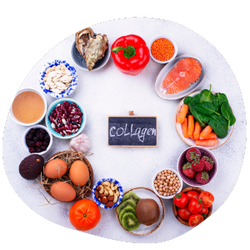






Leave a comment